This is exactly the answer we answer today and – without spoiling further – also show that even with an all-in-one compact cooling system over 400 watts of waste heat, you can still master it acceptable if you only use a more functional radiator than what you can do ex works with 120s at AMD ex works for significantly more money. Of course, a full copper block in a real custom-loop water cooling seems to be much more performant, but first of all not everyone has a chiller and many normal users also doubt their own skills and dare a self-built paddling pool not at all.
Then good advice is needed and we were lucky enough to have one of the right prototypes for a modular system with pre-filled AiO and pre-filled radiators with hoses and quick-release fasteners already in the archive (Alphacool GPX Pro). Of course we wanted to do a counter-test with the Chiller, but we will soon see that for certain reasons we can actually save ourselves nonchalantly.
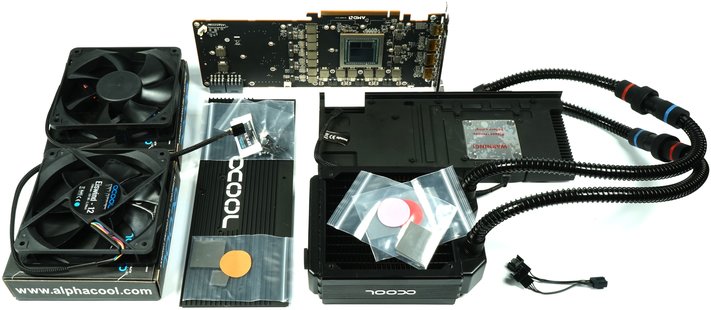
Today, we test with a 120-radiator, just as AMD uses it in its own 80-doller solution (the price is the price that board partners have to pay to AMD internally for the reference AiO solution) with one and two fans (push-pull). In addition, we will show that you need at least a 240 radiator if you really want to overclock the card properly.
However, there are a few things we need to do to get the results that follow up to us to be properly categorized and weighted:
We generally measure with Witcher 3 in Ultra HD, because here the generated loads are with the highest and represent a really real scenario. We will also see later that this 3D load has a very clear effect on the clock rates achieved. In addition, this game is an ideal stability test for GPU and memory alike.
With regard to the takrates, which may seem too low for some here in this test (because they may have seen much higher values in some reviews), we also ask you to note that AMD's drivers sometimes output erroneously high values far from any reality. before it was fixed a few hours before the launch. AMD wrote:
"This new driver also reports the previously advertised GPU boost clock instead of the top DPM peak frequency … We've not yet had time to test this functionality with all other aspects of the driver and needs further testing before prime time, but we wanted to enable you to play around with OC!"
Assembly and Notes
There are some important things to consider when assemb. If you are disturbed by the not completely cleaned thermal paste within the package, let's be told that this doesn't bother you if it's not conductive. After more than ten radiator changes, this can hardly be realized without damage. Despite molding, the Interposer still sits a bit hollow on the PCB of the package, so we better not put too much pressure on cleaning, even on this small board. Because we only have one card.
As a paste you should not use very counted products, but absolutely pay attention to the quality. With blobs and sausages, however, we at Vega don't get far because of the two additional memory modules, here you have to do the thin (!) and very even job with a spatula. The cryonaut from Thermal Grizzly was used, but it could have been any other, not too viscous thermal paste.
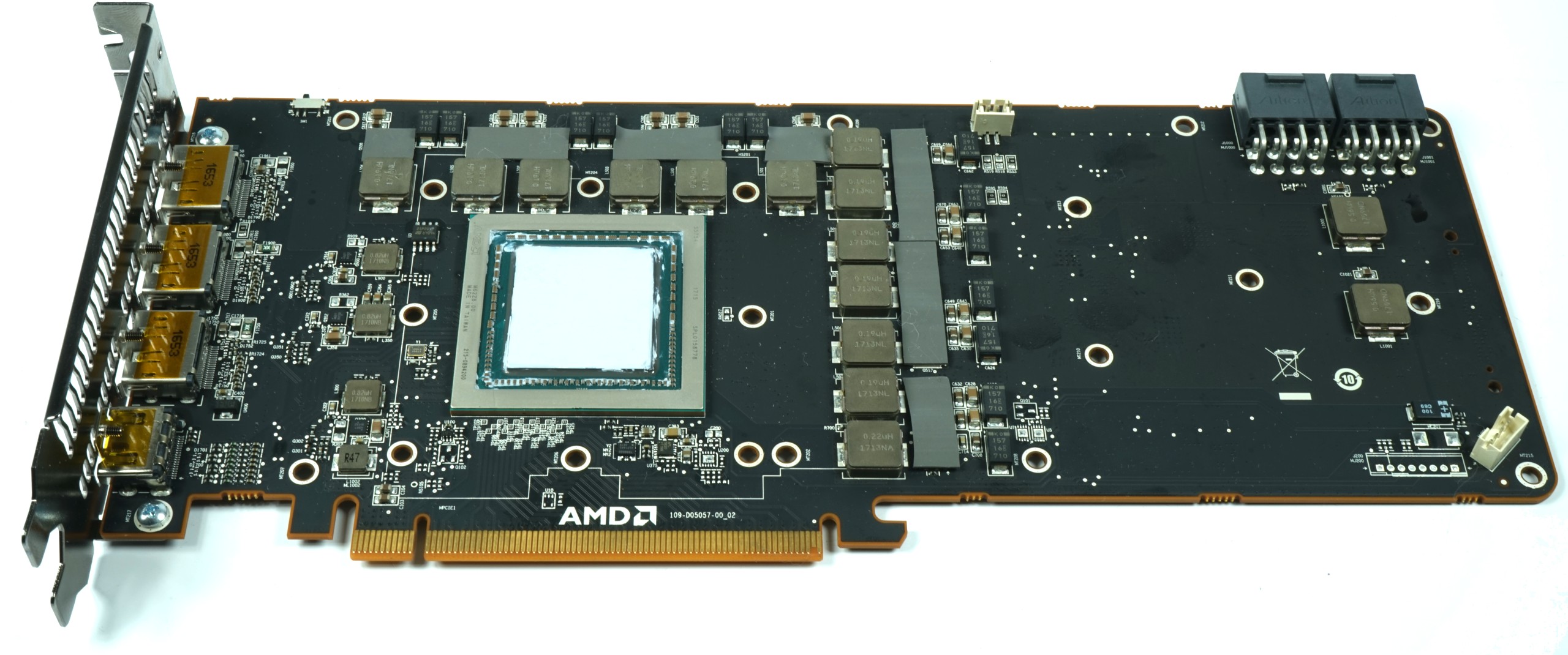
It is also important to cover the very low voltage transformer housings well with the thermal guide pads in suitable thickness. The whole thing should also happen a little more extensively in order to be able to absorb waste heat from the board. If the cooler is there, the coils should of course also be included, because the voltage converters alone give a very small area.
For the back, Alphacool provides a cooling backplate, but it is not enough to provide a thermal pad only on the back below the voltage converters. The doubler chips are already hot at the latest with the OC and more than 400 watts of power consumption well above 110°C and are begging for a cooling aid. That's why we cut soft, matching pads longitudinally and connected the board to the backplate more extensively than the manufacturer had originally planned.
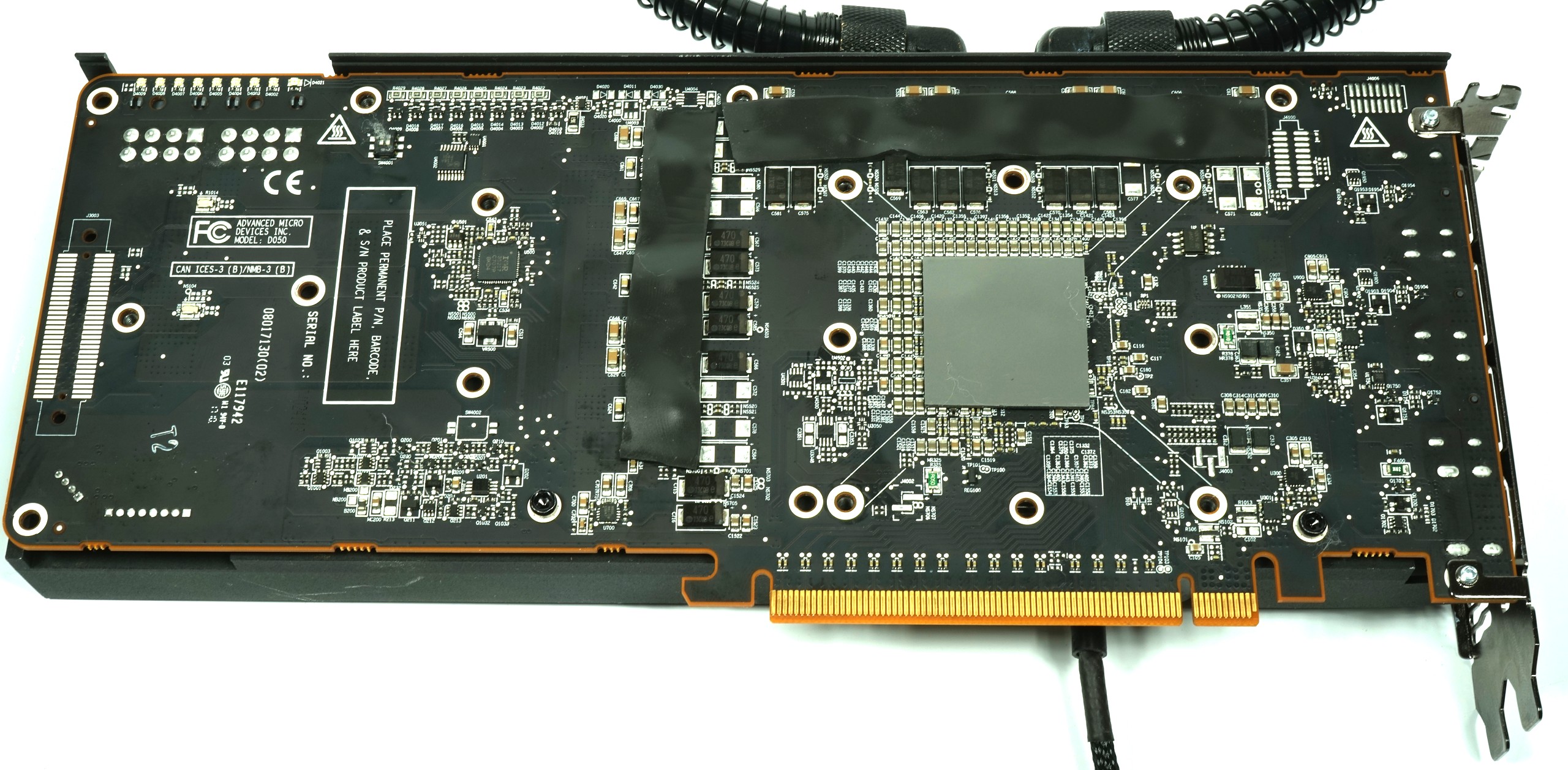
However, the pad below the GPU can be safely saved, because it almost has a counterproductive effect. Why this is so, the infrared images on the next page will tell us.
Last but not least, the backplate comes on top of it and you screw everything nicely without overturning the screws. Even the untrained should have done the complete conversion in under an hour.
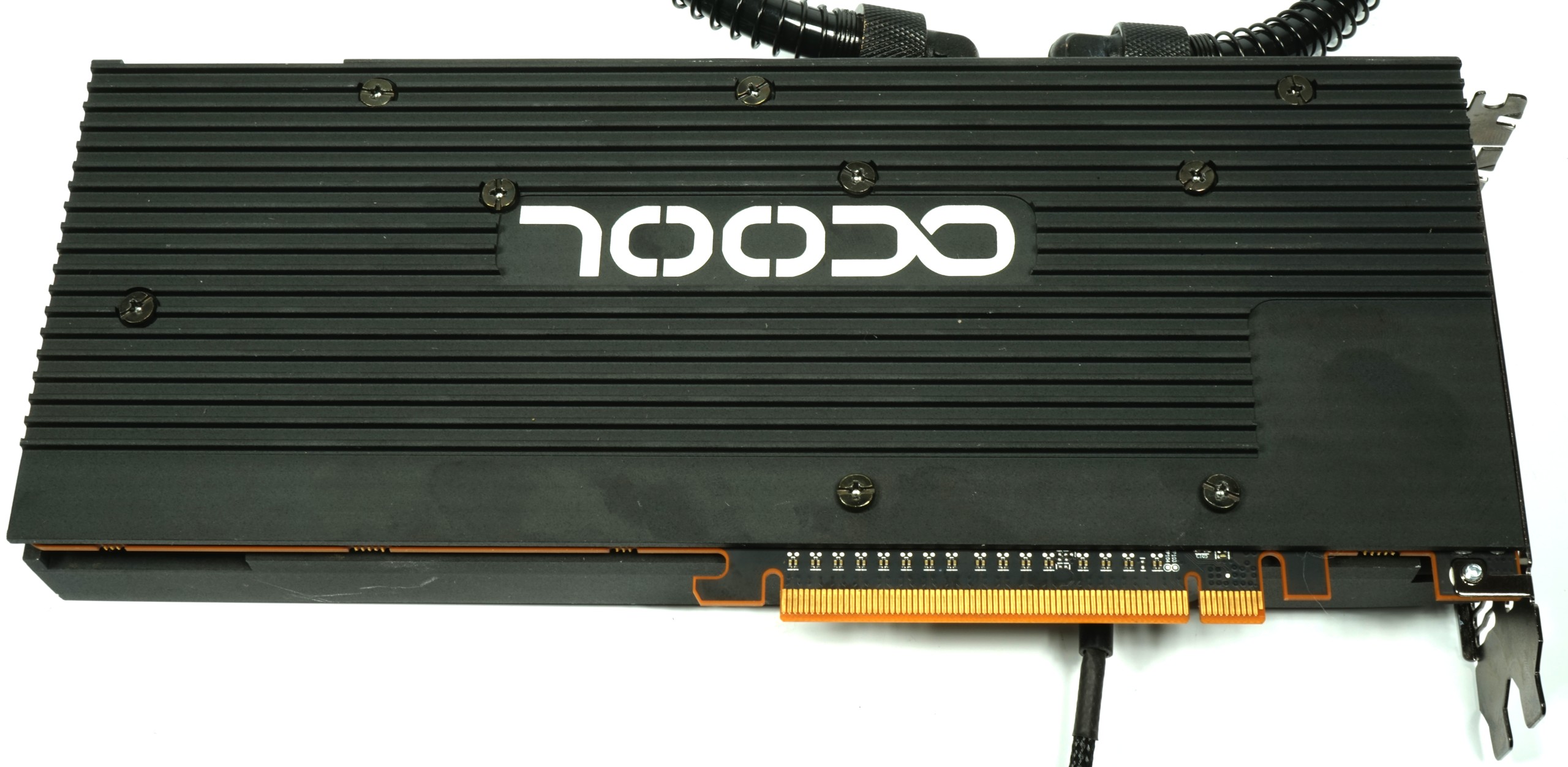
Thanks to the quick-release fasteners, we will now be able to easily change the cooling in the tests without having to change the hose systems and refill the cooling.
Test system and measurement methods
The new test system and the methodology have already been described in great detail in the basic article "How We Test Graphics Cards" (English: "How We Test Graphics Cards") and therefore, for the sake of simplicity, we now only refer to this detailed Description. So if you want to read everything again, you are welcome to do so. However, we have again improved CPU and cooling to largely exclude possible CPU bottlenecks for this fast card.
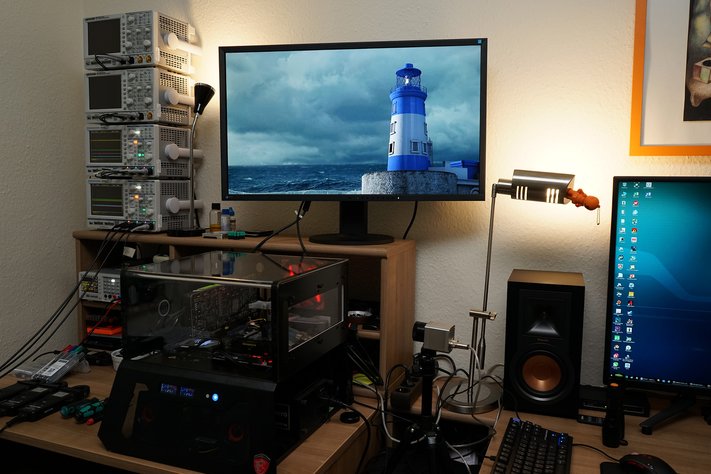
If you are interested, the summary in table form quickly provides a brief overview:
| Test systems and measuring rooms | |
|---|---|
| Hardware: | Intel Core i7-6900K -4.3GHz MSI X99S XPower Gaming Titanium Corsair Vengeance DDR4-3200 1x 1 TByte Toshiba OCZ RD400 (M.2, System SSD) 2x 960 GByte Toshiba OCZ TR150 (Storage, Images) Be Quiet Dark Power Pro 11, 850-watt power supply |
| Cooling CPU: | Alphacool Ice Block XPX Alphacool Ice Age 2000 Chiller 2x Be Quiet! Silent Wings 3 PWM (Closed Case Simulation) Thermal Grizzly Kryonaut (for cooler change) |
| Ambient temperature: | 22°C (air-con) |
| Housing: | Lian Li PC-T70 with expansion kit and modifications Modes: Open Benchtable, Closed Case |
| Monitor: | Eizo EV3237-BK |
| Power consumption: | non-contact DC measurement on the PCIe slot (Riser-Card) non-contact DC measurement on the external PCIe power supply Direct voltage measurement on the respective feeders and on the power supply 2x Rohde & Schwarz HMO 3054, 500 MHz multi-channel oscillograph with memory function 4x Rohde & Schwarz HZO50, current togor adapter (1 mA to 30 A, 100 KHz, DC) 4x Rohde & Schwarz HZ355, touch divider (10:1, 500 MHz) 1x Rohde & Schwarz HMC 8012, digital multimeter with storage function |
| Thermography: | Optris PI640, infrared camera PI Connect evaluation software with profiles |
| Acoustics: | NTI Audio M2211 (with calibration file) Steinberg UR12 (with phantom power for the microphones) Creative X7, Smaart v.7 own low-reflection measuring room, 3.5 x 1.8 x 2.2 m (LxTxH) Axial measurements, perpendicular to the center of the sound source(s), measuring distance 50 cm Noise in dBA (Slow) as RTA measurement Frequency spectrum as a graph |
| Operating system and drivers: |
Windows 10 Pro (Creators Update, all updates) Crimson 17.30.1051 Beta 6a (11.08.2018) |






























Kommentieren